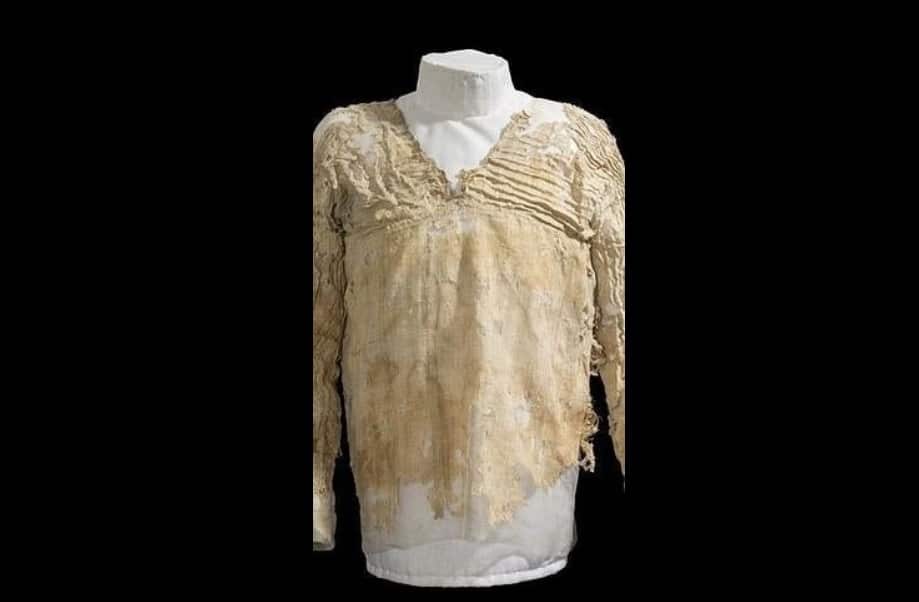

The Tarkhan Dress stands as one of the most remarkable textile discoveries in archaeology and is currently considered the oldest known woven garment in the world.
Also known as the Tarkhan Gown, dates back to between 3482 and 3102 BC. This places it in Egypt’s First Dynasty or the late Predynastic period. It is made of linen, a textile commonly used in ancient Egypt. The dress was discovered in the Tarkhan cemetery, located just south of Cairo, by the renowned British Egyptologist Flinders Petrie in 1913.
Initially, the dress was found bundled among a collection of textiles and was not immediately recognized for its historical significance. It remained stored for decades until it was examined more closely in the 1970s at the UCL Petrie Museum of Egyptian Archaeology. In 2016, the dress was radiocarbon dated using accelerator mass spectrometry (AMS), confirming its extraordinary age.
The Tarkhan Dress features a fitted bodice, narrow sleeves, and finely pleated panels. These elements reflect a sophisticated level of tailoring skill, indicating that complex garment-making practices were already established over 5,000 years ago. Its refined design suggests it likely belonged to a person of high status, possibly an aristocratic woman or a member of the royal household.
Today, the dress is housed at the Petrie Museum of Egyptian Archaeology in London. Its preservation is incredibly rare, as textiles from that time are highly perishable. As Alice Stevenson, a curator at the museum, explains, finding a nearly complete garment like this is an extraordinary archaeological discovery.
“The dress has provided people with a real sense of the antiquity and longevity of the ancient Egyptian state and society.”
As the oldest nearly complete garment ever discovered, it demonstrates that complex clothing design existed far earlier than previously thought, predating similar examples from other ancient civilizations by centuries or even millennia.
While fragments of cloth have been found at other early sites, such as Neolithic Swiss lake dwellings or the Indus Valley, none match the Tarkhan Dress in terms of completeness or tailoring complexity.
Most early textiles are simple weaves or undecorated bands, but the Tarkhan Dress displays advanced techniques like pleating and shaping for a tailored fit. This places ancient Egyptian textile craftsmanship far ahead of its contemporaries, showcasing a society with a deep appreciation for aesthetic detail and personal adornment.
The sophistication of the Tarkhan Dress reflects not only technological advancement but also the social and cultural values of early dynastic Egypt. Clothing was not merely functional; it was a marker of status, identity, and artistic expression.
The existence of such a garment suggests the presence of a highly stratified society where elites could commission and wear finely crafted clothing. It also hints at a developed economy capable of supporting specialized artisans and a system that valued and preserved luxury goods.
Related: 4,400-Year-Old Tomb of Pharaoh Userkaf’s Son Discovered in Egypt
